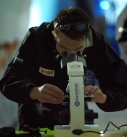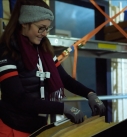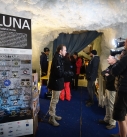IGLUNA
PREVIOUS EDITIONS
IGLUNA 2020

The purpose of the IGLUNA 2020 mission was to demonstrate technologies for a space habitat that will sustain life in an extreme environment and to operate the novel technologies through a remote control mode.
Based on the heritage of IGLUNA 2019, this second edition enabled the increase of the projects readiness level. It also brought new actors and industrial partners together to promote innovative space technologies. The multidisciplinary nature of this edition covered a full range of topics, going from the habitat conception and construction to life support systems, communication and navigation, power management, as well as human well-being and science.
IGLUNA 2020 started in September 2019 with 15 teams of students from 10 European universities who developed their technology over two academic semesters. The final step would have been the Field Campaign demonstration at the VERKEHRSHAUS – Swiss Museum of Transport and on the Pilatus from the 10 to the 19 July 2020.
However, due to the Covid-19 crisis, the Field Campaign took place virtually, where all the student teams connected from their countries to present their projects and hard work to the rest of the world. The project shows and additional space experts presentations have been live-streamed and are now publicly available on YouTube.
In March 2020, the three most advanced teams have been selected to work on a lunar mission at ESA’s Concurrent Design Facility. They were reviewed by ESA’s system engineering experts in December 2020. The mission is named “SCALE” and gathers AMPEX, SAMPLE and Celestial technologies.
project teams

milestones
our board of experts
sponsors & partners
The first ESA_Lab Demonstrator Project IGLUNA offered students opportunities to participate in an international, collaborative project on a visionary space topic: A Habitat in Ice.
In one year, 20 student teams from various disciplines gathered their knowledge to design a habitat potentially suitable for an extreme environment, such as the Moon.
More than 150 students from 9 European countries designed their prototypes during the autumn semester 2018 and built their modules in the spring semester 2019. From the 17th of June until the full disassembly on the 3rd of July, the results came together during a Field Campaign inside the glacier cave of the Klein Matterhorn and an exhibition in the village of Zermatt, Switzerland.

project teams





























































































